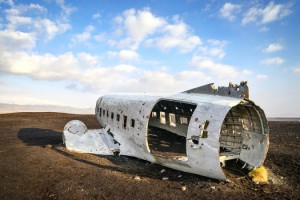
I am reading Roxane Gay’s immensely powerful memoir, Hunger. It comes at a time when I am deep into another intense period of therapy, thinking about trauma in new ways and inching toward recognition of the traumas my body has been harboring ever since I was a very small child. I have been at odds with my body for such a long time.
EMDR therapy allowed me to see, for the first time in my life, my body’s intelligence. An emotional intelligence I’d wanted nothing to do with up to that point, because I’d wanted nothing to do with my own emotions. I knew they would be unbearable. After EMDR helped me to process and to bear what I was feeling about having been trapped in a crashed airplane, about having survived my little sister, about having been told—and believing—that I did not deserve to be alive, I thought I was done.
But here’s the thing I am coming awake to: my body is riddled with pockets of grief, and anger, and shame. And joy, thankfully. My body is mapped with sites of trauma, and if I can let myself follow its quiet guidance, if I can stand to visit each one and, with help, connect to how it feels, then I can hope to fully embody my emotion. I can own my whole feeing and thinking self.
I am seeing two therapists weekly now. It was getting difficult to hold on to—or even to understand, sometimes—the concepts we were discussing in talk therapy. It felt like they were sliding out of my brain before I could process them. This made sense, my therapist said. We were talking about abuses that occurred in early childhood, before I had the language to describe them to myself, to name them.
I found a somatic psychotherapist to work with, because those abstract concepts that slide out of my brain were preceded by wordless, flesh-and-blood traumas imprinted on skin. We are in the early stages of our work together, slowly setting out on a voyage around my body. She puts a hand on my back and I burst into tears. I lie on a green mat on the floor and sob. I am a small, small girl in bed in the dark, tail tucked between my legs.
Something my talk therapist said yesterday, when we were discussing Hunger, made me consider that I may not always hold myself at odds with my body. I am bereft of my body. Bereft of the whole, unbroken self who came into the world as a Song of Joy. She was taken by adults who had no right. But I am moving through the dark toward her again.
As Gay writes, “She is still small and scared and ashamed, and perhaps I am writing my way back to her, trying to tell her everything she needs to hear.”


